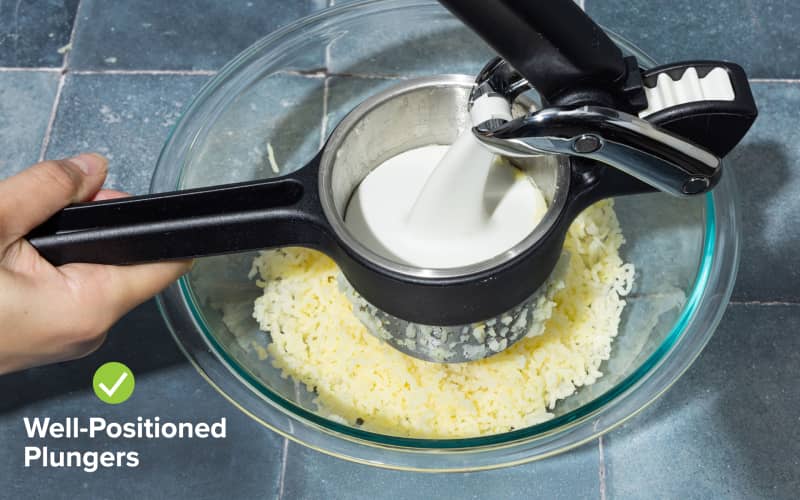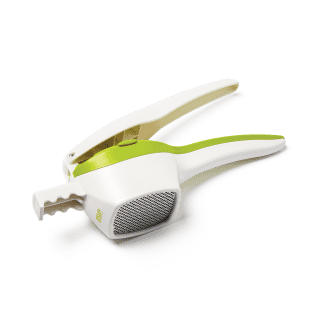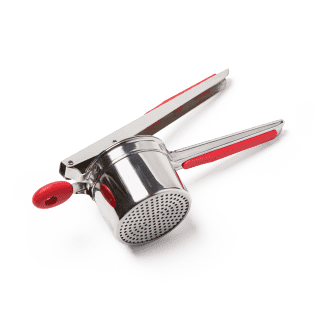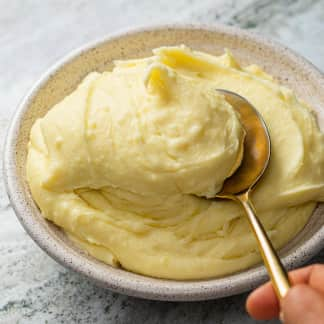The best potato ricers efficiently extrude potatoes into a fine, even puree and are comfortable and easy to use. Our favorite is the Chef’n FreshForce Potato Ricer Plus. Its unique design makes it particularly quick and easy to rice lots of potatoes, and we loved its sturdy, simple construction, which was easy to assemble and clean. Our Best Buy is the RSVP International Potato Ricer. It takes a little more muscle to use than our top choice and has a few more parts and nooks and crannies that require cleaning. But it performs just as well and its mostly plastic construction makes it more lightweight than our heavier top choice.

If you’ve only ever made mashed potatoes with a potato masher, you owe it to yourself to try making them using a potato ricer. This special tool makes some of the smoothest, silkiest, lightest mashed potatoes you can have, with no lumps or hard bits in sight. These mashed potatoes rival those made in a food mill, but the potato ricer is less expensive than the food mill and takes up a lot less space in your kitchen.
Potato ricers are essential for making certain types of gnocchi. We also like using them to squeeze the liquid out of cooked spinach or for getting as much water as possible out of raw zucchini or potatoes before making fritters.
How Do Potato Ricers Work?
All potato ricers share a similar design. Essentially, they work a bit like giant garlic presses. Each model has two “arms,” or handles. On one arm sits a hopper, where you put your cooked, peeled potatoes. The hopper itself can be perforated, or it can be fitted with a disk that has perforations. On the other arm sits a plunger—a hinged plate. Once your potatoes are in the hopper, you press down on them using the arm with the plunger. The plunger pushes the potatoes through the perforations in the hopper, extruding or “ricing” the potato into your pot or bowl as a fine puree.

What to Look For
- Simple Design: We appreciated models that were composed of relatively few well-designed parts. It’s easier to assemble, clean, and keep track of one or two components as opposed to three or four. Food is also more likely to get stuck in models with extra parts or nooks and crannies.
- Lots of Perforations: All the models came with a hopper or disk featuring small perforations that measured about 1.5 mm in diameter—the best size for ricing potatoes to a fine puree. The more perforations of that size that a hopper has within a given surface area, the more exit points there are for the potatoes—and the faster and easier it is to evenly extrude all the potatoes. Our top model has 459 perforations—the second-most of any we tested—which makes it especially effortless to use. In the past, we preferred that the perforations be confined to the bottom of the hopper, as this made for slightly neater ricing. But these days, we feel differently. Adding perforations to the sides of the hopper can reduce the force required to rice the potatoes. We don’t mind a little mess as the potato extrudes from all sides of the hopper if it means we don’t have to work quite as hard to use the ricer.

- Well-Positioned Plungers: It’s important that the plate part of the plunger is positioned at such an angle that it hits the potatoes straight on every time, which ensures that the potatoes get extruded properly.

- Comfortable Handles: We preferred models with long, rounded handles made from grippy materials. These were easier and more comfortable to hold even when our hands were wet.
Nice to Have
- Pot Hooks: Some ricers came with hooks that allowed us to rest the models on the rim of the pot or saucepan, which made it less tiring to operate them.
What to Avoid
- Models with Relatively Few Perforations: These were harder to use and required more force to muscle the potatoes through.
- Poorly Positioned Plungers: We were frustrated by models that didn’t always hit the potatoes straight on, as we wasted time repositioning the plunger every time we needed it to push the potatoes through.
- Uncomfortable Handles: Quite a few of the models we tested had handles with sharp or squared-off edges, which made them much less pleasant to hold.
Other Considerations
- Extra Ricing Disks: Some models include several disks with perforations of different sizes for ricing food at different levels of fineness. You simply insert these disks into the bottom of the hopper and add a special collar to help keep them in place, switching the disks out as needed. If you want to make chunky applesauce or spaetzle, a coarser disk can come in handy. But most people won’t find these disks to be particularly useful; when we surveyed all the cooks in the test kitchen, only one said he’d ever used a disk other than the fine one. We think a single disk or setting for “fine” ricing is all you’re likely to need. And while the extra disks don’t necessarily hurt, they do increase the number of parts that require cleaning and are more likely to get lost.
- Weight: We had mixed feelings about the weight of some of the ricers. On the one hand, it was easier to lift and handle models made predominantly of plastic, as these were usually lighter in weight than models made mostly of metal. On the other hand, these lighter-weight plastic models sometimes felt a bit flimsier and less durable than heavier metal models, although none of the models we tested broke during testing. We’ve split the difference between the two styles in our rankings. Our top choice is a heavier model made with metal and dense plastic; our Best Buy is a much lighter-weight model made mostly of plastic. We hope you’ll choose the model that makes most sense for your hand strength.



















